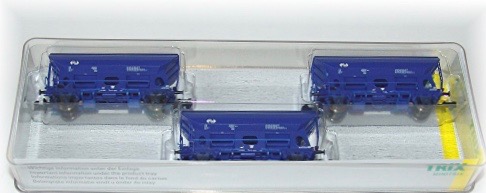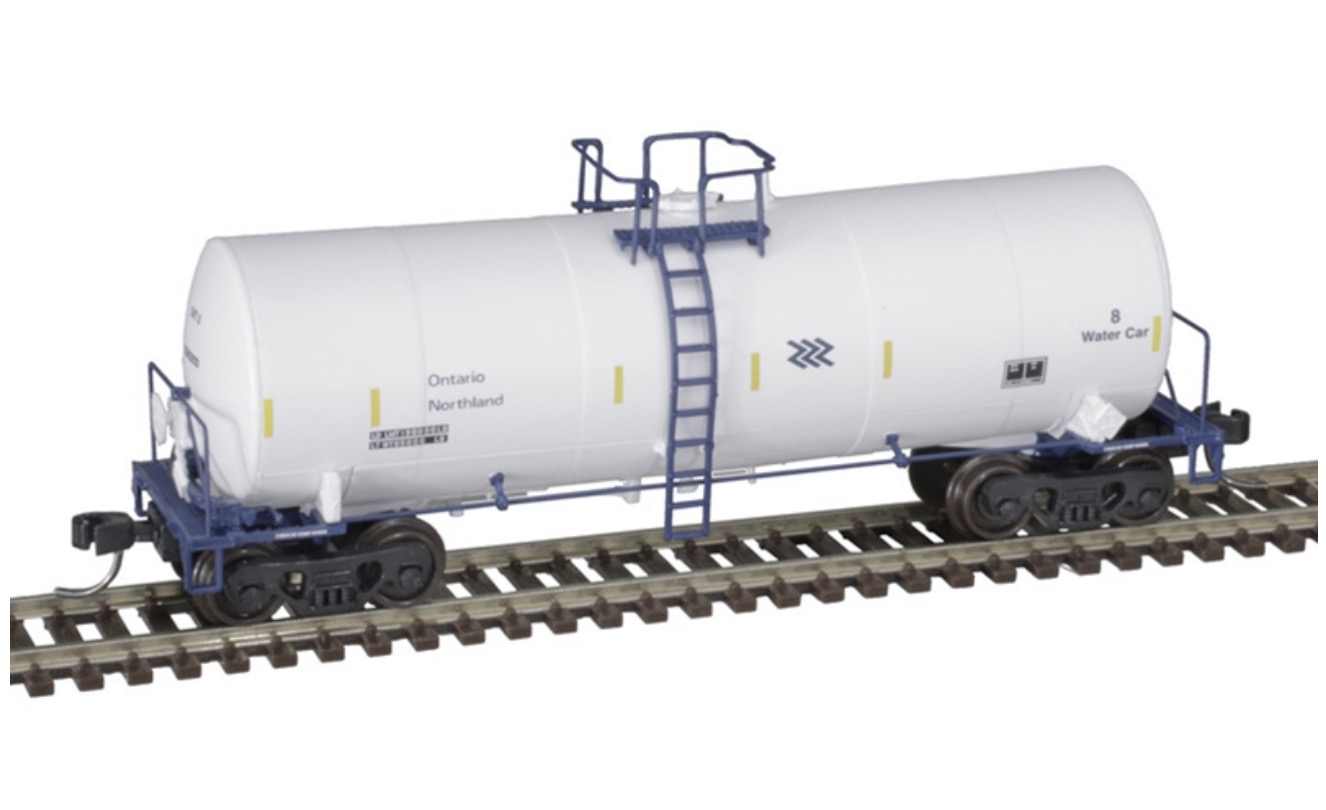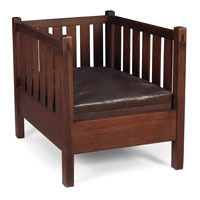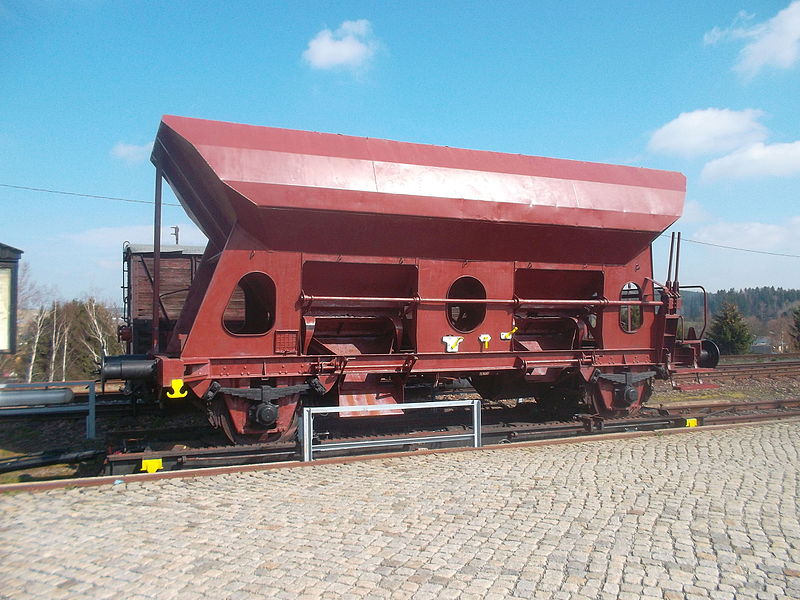Specific Item Information: Prototype: Dutch Railways (NS) rotary vane side unloading vehicle. Version with lockable cargo space. Use: For moisture-sensitive goods.
Model: Wagon with different operating numbers and with many added details, with kinematics for close coupling. Total length over buffer 180 mm. Highlight: Shape variant with hinged lids as cover.
Model: Wagon with different operating numbers and with many added details, with kinematics for close coupling. Total length over buffer 180 mm. Highlight: Shape variant with hinged lids as cover.
Prototype History: The cars are used for transporting miscellaneous commodities across Europe. They are designed to rapidly discharge whatever they are carrying. They are relatively short cars and typically travel in unit-consists.
With the open top, weather sensitive material is a bad idea, because normally these cars leave their contents exposed to the elements. However, some versions come with lockable hinged lids to make their cargo somewhat weather resistant.
With the open top, weather sensitive material is a bad idea, because normally these cars leave their contents exposed to the elements. However, some versions come with lockable hinged lids to make their cargo somewhat weather resistant.
Road Name History: Nederlandse Spoorwegen (English: Dutch Railways) or NS is the principal passenger railway operator in the Netherlands. NS provides rail services on the Dutch main rail network (hoofdrailnet). The rail infrastructure is maintained by network manager ProRail, which was split off from NS in 2003. Freight services, formerly operated by NS Cargo, merged with the DB Schenker group in 2000.
NS runs 4,800 scheduled domestic trains a day, serving 1.1 million passengers. Also, NS provides international rail services from the Netherlands to other European destinations and carries out concessions on some foreign rail markets through its subsidiary Abellio.
From Wikipedia
NS runs 4,800 scheduled domestic trains a day, serving 1.1 million passengers. Also, NS provides international rail services from the Netherlands to other European destinations and carries out concessions on some foreign rail markets through its subsidiary Abellio.
From Wikipedia
Brand/Importer Information: Trix is a German company that originally made Trix metal construction sets. one of its co-founders was Stephan Bing, the son of the pioneer toy-maker industrialist Ignaz Bing. In 1935 the company began producing the electrically powered model trains that it became famous for, under the Trix Express label. Prior to the outbreak of World War II the Trix company produced a small range of fairly unrealistic AC powered three rail models running at 14 volts.
N gauge models under the Minitrix brand were made from the late 1960s mostly of European prototypes (German and British primarily). North American prototypes were also manufactured and marketed under the Aurora "Postage Stamp" brand; later these items were sold under the American Tortoise, Model Power and Con-Cor brands. Trix sometimes utilized North American consultants to aid in the design of this portion of the product line. The "Hornby Minitrix' brand was used in the 1980s for a short lived range of British outline models using the earlier product tooling.
Trix's owner in the 1980s and 1990s was Mangold, which went bankrupt in the late 1990s and Märklin purchased the assets in January 1997. In part, this purchase was a reflection of Märklin's need for added production capacity; Trix had been manufacturing certain items for Märklin in previous years. The purchase was also in response to the earlier purchase of the Karl Arnold company by the Italian company Rivarossi; Märklin were very keen to take over Trix market share in 2-rail H0 and especially Minitrix, until then Märklin had not marketed N gauge models. In 2003, Märklin introduced its first N gauge models under the well established Minitrix brand. A number Märklin H0 scale three-rail AC locomotives have also been introduced in two-rail DC versions under the Trix logo and many models are shared between the two brands.
From Wikipedia
N gauge models under the Minitrix brand were made from the late 1960s mostly of European prototypes (German and British primarily). North American prototypes were also manufactured and marketed under the Aurora "Postage Stamp" brand; later these items were sold under the American Tortoise, Model Power and Con-Cor brands. Trix sometimes utilized North American consultants to aid in the design of this portion of the product line. The "Hornby Minitrix' brand was used in the 1980s for a short lived range of British outline models using the earlier product tooling.
Trix's owner in the 1980s and 1990s was Mangold, which went bankrupt in the late 1990s and Märklin purchased the assets in January 1997. In part, this purchase was a reflection of Märklin's need for added production capacity; Trix had been manufacturing certain items for Märklin in previous years. The purchase was also in response to the earlier purchase of the Karl Arnold company by the Italian company Rivarossi; Märklin were very keen to take over Trix market share in 2-rail H0 and especially Minitrix, until then Märklin had not marketed N gauge models. In 2003, Märklin introduced its first N gauge models under the well established Minitrix brand. A number Märklin H0 scale three-rail AC locomotives have also been introduced in two-rail DC versions under the Trix logo and many models are shared between the two brands.
From Wikipedia
Item created by: gdm on 2019-09-07 08:24:03. Last edited by CNW400 on 2020-08-13 17:55:16
If you see errors or missing data in this entry, please feel free to log in and edit it. Anyone with a Gmail account can log in instantly.
If you see errors or missing data in this entry, please feel free to log in and edit it. Anyone with a Gmail account can log in instantly.











